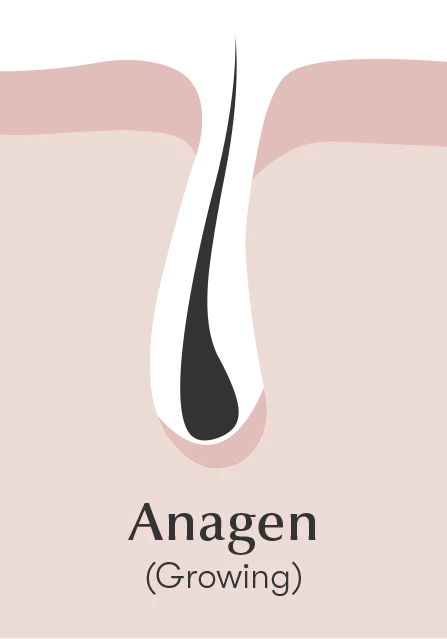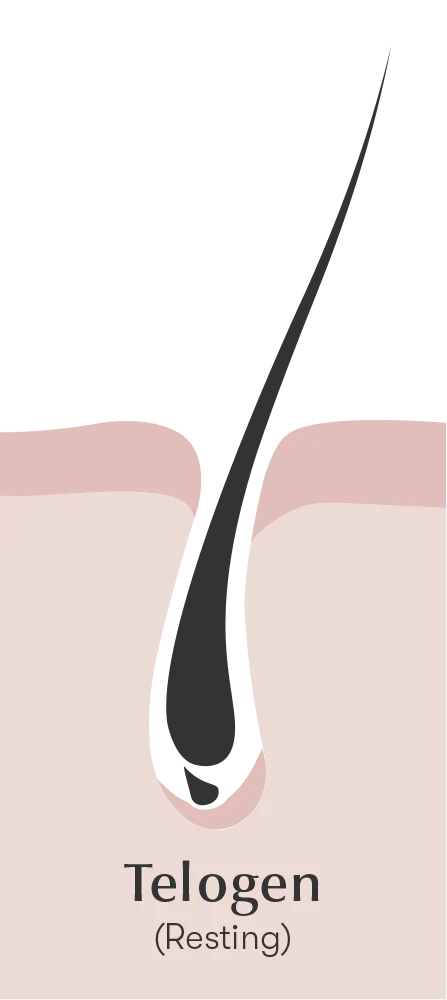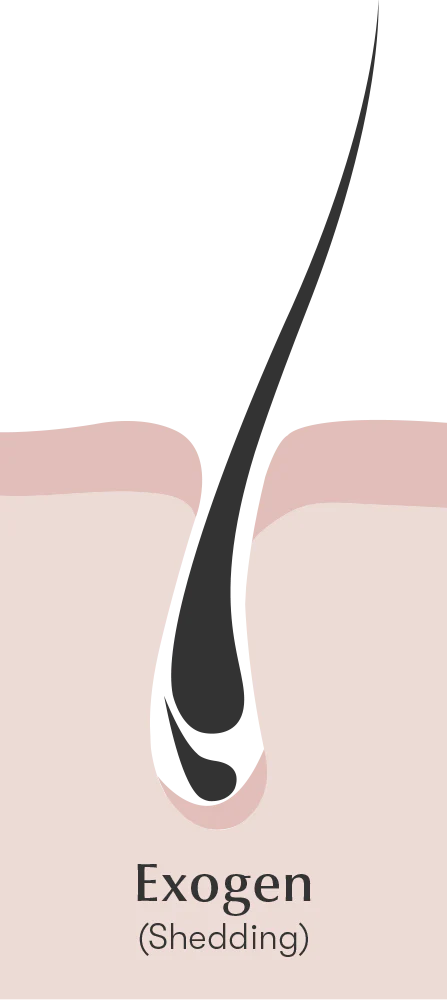The 4 Phases of Hair Growth
Before breaking down the various factors that play into hair thinning, shedding, and hair loss… it is important to understand the hair growth cycle. There are 4 different phases of the growth cycle and each hair follicle acts independently. This means that each follicle is in a different stage of its own growth cycle almost acting like its own “mini organ”.
The Anagen phase is considered the “growth period” when the hair is actively growing. The hair bulb is anchored into the scalp providing it with nourishing blood flow. About 80-85% of your follicles are in this stage which lasts for 2-8 years. The Catagen phase is a short “transitional period” when the hair stops growing and the hair bulb detaches from the nourishing blood supply. The Telogen phase is the “resting period” where the detached hair strand rests in the follicle. Hair is no longer growing but it hasn’t shed yet (about 10-15% of your hairs are in this phase). The follicle remains dormant for around 3 months while new hair growth begins to form underneath it. The Exogen phase is the “shedding phase” where the hair finally exits or “sheds” the follicle as it begins a new anagen phase for new hair growth. Anagen Phase

Catagen Phase

Telogen Phase

Exogen Phase
Each follicle is either growing, transitioning, resting, or shedding at any given time which explains why minimal shedding (50-100 hairs per day) is considered normal. During healthy hair growth… 80-85% of the follicles on your head are actively growing. However, when the hair growth phases are disrupted - the anagen “growth” phases can shorten and telogen “resting” phases can lengthen.
The Hair Growth Cycle also illustrates why certain treatments may take several months to show results and why consistent use of treatments is crucial. Follicles are always shifting through the 4 phases and need consistent nourishment for healthy hair growth.
Shop Eufora Thickening Products

































